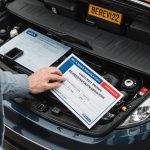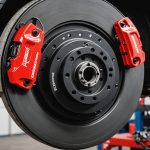Understanding the Basics of Tire Pressure and Ambient Temperature
Tire pressure is directly influenced by ambient temperature, impacting overall vehicle safety. As ambient temperature rises, the air inside tires expands, causing an increase in tire pressure. Conversely, cooler temperatures result in air contraction, leading to reduced tire pressure. This fluctuation emphasizes the importance of consistent tire pressure monitoring throughout varying seasons.
Understanding the science, ambient temperature changes affect air density within the tire. Generally, air pressure in tires can increase by about 1-2 PSI for every 10 degrees Fahrenheit rise in temperature. Conversely, a drop in ambient temperature brings a decrease in air pressure. This principle means that as temperatures fall, it is crucial to adjust tire pressure accordingly to maintain optimal values for safety.
Have you seen this : Maximizing Engine Performance: Adjusting Coolant Mixtures for Frosty UK Weather
For safe driving conditions, it’s vital to adhere to manufacturer-recommended tire pressure levels, typically ranging between 30-35 PSI for most vehicles. Maintaining tire pressure within this optimal range ensures better traction, fuel efficiency, and reduces the risk of tire wear and blowouts, significantly enhancing vehicle safety. Regular tire checks are essential, especially with significant changes in ambient temperature, to ensure compliance with these safety measures and optimal driving performance.
The Science behind Tire Pressure Changes with Temperature
Understanding the science of tire pressure is crucial for maintaining vehicle performance and safety. Tire pressure is significantly influenced by temperature changes, and this is primarily explained by the Ideal Gas Law and principles of thermal expansion.
Also to see : Mastering Your Braking Technique: Essential Tips for Driving with Upgraded Ceramic Brake Pads
The Ideal Gas Law and Tire Pressure
The Ideal Gas Law, expressed as PV = nRT, establishes a relationship between pressure (P), volume (V), and temperature (T) with constant R. As temperature increases, tire pressure rises due to heat expansion. Conversely, cooler temperatures decrease pressure, affecting tire performance and safety. This physical property is integral to comprehending how hot summer roads can lead to overinflation risks while winter lows may underinflate tires.
Thermal Expansion of Air
Air inside the tire expands as it warms, an example of thermal expansion. Heat expansion increases pressure, potentially leading to overinflation if not monitored. This physical change occurs because heat causes air molecules to move more rapidly, occupying more space within the tire. Properly maintaining the right pressure level adapts to these changes, ensuring optimal tire performance while driving.
Temperature Drops and Pressure Loss
When temperatures drop, the air contracts, and tire pressure decreases, commonly leading to underinflated tires. This condition is frequent in chilly environments or during fall and winter when temperature fluctuations are common. Drivers often experience this phenomenon during morning commutes or when sudden cold fronts pass, requiring regular monitoring for safe travel.
Safety Implications of Improper Tire Pressure
Despite tire safety’s crucial role in accident prevention, maintaining proper tire pressure often goes overlooked. Improper tire pressure can substantially influence vehicle handling and braking efficiency. Vehicles with low tire pressure might experience excessive wear on the tire’s edges, whereas high pressure can cause wear in the central tread. Both scenarios pose significant risks. Low pressure often leads to poor handling, especially in emergency maneuvers, while high pressure may cause the vehicle to bounce, reducing traction and stability.
Statistics reveal that improper tire safety contributes to many road accidents, with an estimated 11,000 tire-related crashes occurring annually. Most of these mishaps are linked to either under-inflated or over-inflated tires. Such accidents often arise from handling issues involving poor cornering, longer stopping distances, or sudden tire failure.
Beyond immediate safety concerns, incorrect tire pressure can also cause long-term damage to your vehicle. Regularly driving with improper pressure can lead to tire deformation and, subsequently, reduced lifespan of suspension components. This necessitates more frequent, costly repairs, and replacements. Proper tire pressure is not merely a matter of operational efficiency; it is a crucial element for maintaining roadworthiness and ensuring the wellbeing of all road users.
Expert Recommendations for Maintaining Proper Tire Pressure
Maintaining correct tyre pressure is crucial for vehicle safety and performance. Knowing when to check and how to monitor can boost confidence in your daily drive.
Frequency of Checking Tire Pressure
Regular tyre pressure checks are vital for optimal vehicle operation. The best practice is to check your tyre pressure monthly or before long trips. Daily temperature fluctuations can subtly alter pressure, impacting performance. Regularly scheduled checks can prevent underinflation, which may lead to tyre damage or increased fuel consumption.
Use of Tire Pressure Monitoring Systems (TPMS)
TPMS offers convenience by automatically alerting you to changes in tyre pressure, providing a proactive approach to tire maintenance. However, remember these systems have limitations and primarily detect significant changes. Therefore, periodic manual checks are still recommended as a safety tip.
Best Practices for Seasonal Changes
Seasonal changes require particular attention to tyre pressure. As temperatures drop, tyre pressure tends to fall. A common guideline is that tyre pressure decreases by roughly 1 PSI for every 5-degree drop in temperature. Conversely, warmer climates may warrant pressure adjustments to prevent overinflation. Adapting your tyre maintenance strategy to these seasonal variations will ensure consistent safety and performance year-round. Following these best practices, along with regular monitoring, can ensure a smoother and safer driving experience.
Addressing Common Misconceptions about Tire Pressure
Understanding tire myths is crucial for safe driving and maintenance. One prevalent misconception is that overinflating tires improves fuel efficiency. In reality, while proper tire pressure does enhance fuel economy, overinflation may cause tires to wear unevenly, reducing their life span and compromising safety. It is essential to adhere to the manufacturer’s recommended tire pressure for optimal performance.
Moreover, some might think that visual checks are enough to ensure correct tire pressure. This public perception can be deceptive because many tires appear fully inflated when they’re actually under-inflated. Regularly using a pressure gauge is vital to accurately assess tire pressure and maintain safety standards.
Another common myth suggests that under-inflating tires provides better traction on wet roads. Contrary to this belief, under-inflation increases rolling resistance and can significantly alter how the vehicle handles, potentially leading to dangerous situations. Proper tire pressure ensures that the tire tread evenly contacts the road, enhancing grip and stability.
Finally, it’s important to understand how tire wear affects pressure metrics. As tires wear, their ability to hold air may diminish. Regularly checking pressure not only maximises fuel efficiency but also identifies potential issues early, preserving tire health and vehicle performance.
Case Studies and Real-Life Examples
Exploring real-world impacts of tire pressure management helps underscore its significance. Understanding diverse driver experiences and insights from case studies offers valuable lessons.
Examples of Tire Pressure Errors
One example documents a driver who neglected tire pressure management, leading to a highway blowout. Their oversight caused severe delays and vehicle damage. Another case illustrates a delivery vehicle operating with under-inflated tires. This oversight increased fuel consumption, impacting profit margins negatively.
Comparing Different Vehicle Types
Different vehicle types exhibit varied responses to pressure changes. A study showed that passenger cars maintain stability despite mild pressure fluctuations. Conversely, heavy-duty trucks displayed noticeable handling issues with minor pressure deviations. Real-world impacts of improper tire pressure were more severe in commercial vehicles, highlighting the importance of regular checks.
Testimonies from Affected Drivers
Personal stories from motorists detail experiences of neglecting tire pressure. One commuter described skidding due to under-inflated tires on a rainy day, leading to a minor accident. Another driver shared how well-maintained tire pressure improved their mileage and ride quality. Such accounts emphasize the necessity of consistent tire checks to prevent mishaps and ensure a smooth driving experience.










